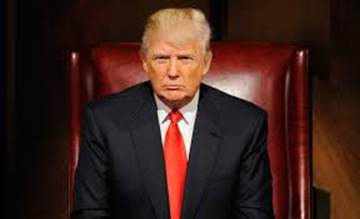 President Trump on Thursday is releasing his more detailed budget plan for the 2018 fiscal year, which begins October 1. While some aspects of the proposal were anticipated, especially after the White House earlier announced it would seek a $54 billion increase in defense spending offset by cuts to domestic programs, today is the first real look at how the president proposes to distribute those offsetting reductions.
President Trump on Thursday is releasing his more detailed budget plan for the 2018 fiscal year, which begins October 1. While some aspects of the proposal were anticipated, especially after the White House earlier announced it would seek a $54 billion increase in defense spending offset by cuts to domestic programs, today is the first real look at how the president proposes to distribute those offsetting reductions.
And it looks like the largest proposed decreases in percentage terms will hit the Environmental Protection Agency, the State Department and related operations and the Department of Labor. HUD and the Agriculture Department, both of which house programs with a major presence in New York City, also would see significant cuts if Congress accepts the president’s recommendations.
The chart below is based on the White House blueprint, though it excludes some details and a few smaller agencies that saw no significant budget change.
| Adopted FY2017 federal budget | President Trump’s FY2018 request | Dollar change FY17-FY18 | Percent change FY17-FY18 | |
| Cabinet agencies: | ||||
| Agriculture | 22.6 | 17.9 | –4.7 | –20.7% |
| Commerce | 9.2 | 7.8 | –1.5 | –15.7% |
| Defense | 521.7 | 574 | 52.3 | +10.0% |
| Education | 68.2 | 59 | –9.2 | –13.5% |
| Energy | 29.7 | 28 | –1.7 | –5.6% |
| Health and Human Services | 77.7 | 65.1 | –12.6 | –16.2% |
| Homeland Security | 41.3 | 44.1 | 2.8 | +6.8% |
| Housing and Urban Development (HUD): | 46.9 | 40.7 | –6.2 | –13.2% |
| Interior | 13.2 | 11.6 | –1.5 | –11.7% |
| Justice | 28.8 | 27.7 | –1.1 | –3.8% |
| Labor | 12.2 | 9.6 | –2.5 | –20.7% |
| State, U.S. Agency for International Development (USAID), and Treasury International Programs | 38 | 27.1 | –10.9 | –28.7% |
| Transportation | 18.6 | 16.2 | –2.4 | –12.7% |
| Treasury | 11.7 | 11.2 | –0.5 | –4.4% |
| Veterans Affairs | 74.5 | 78.9 | 4.4 | +5.9% |
| Major Agencies: | ||||
| Corps of Engineers | 6 | 5 | –1.0 | –16.3% |
| Environmental Protection Agency | 8.2 | 5.7 | –2.6 | –31.4% |
| National Aeronautics and Space Administration | 19.2 | 19.1 | –0.2 | –0.8% |
| Other Agencies | 29.4 | 26.5 | –2.9 | –9.8% |
| Subtotal, Discretionary Base Budget Authority | 1068 | 1065 | –2.7 | –0.3% |
Also on Thursday, the White House submitted to Congress a request for budget changes in the current fiscal year. There, the president calls for $30 billion in new defense spending, a $5 billion boost for Homeland Security and $18 billion in cuts elsewhere.








